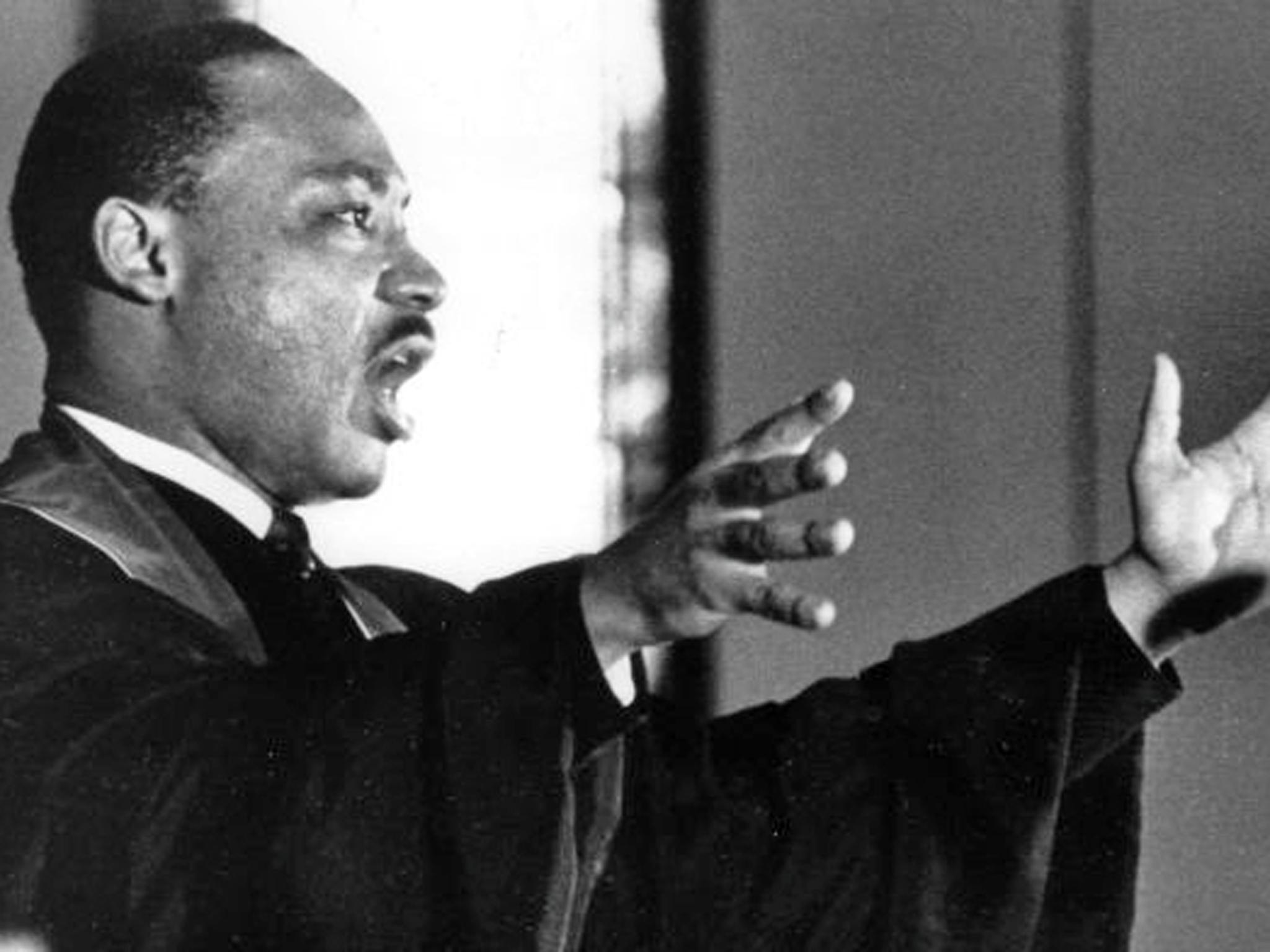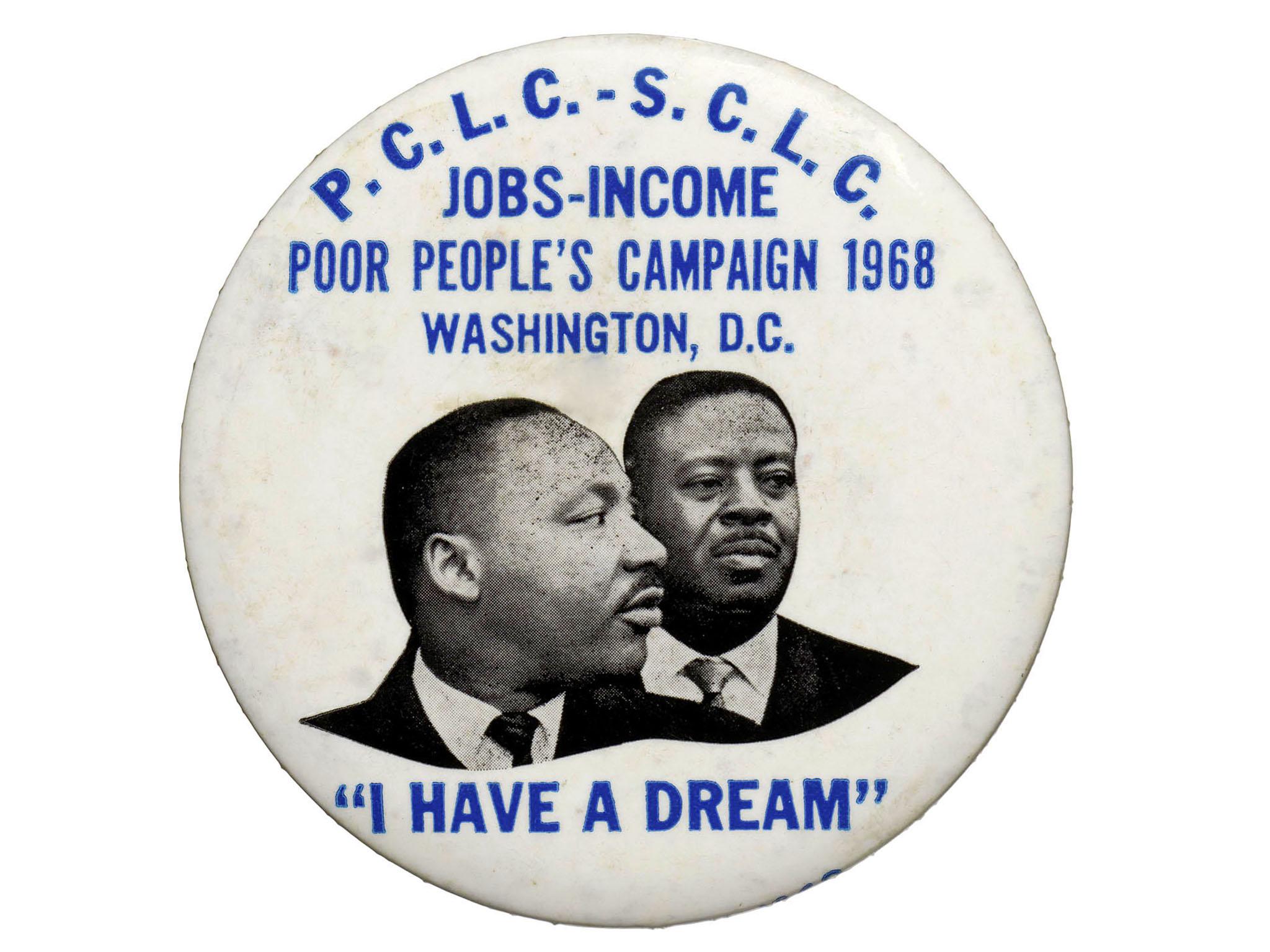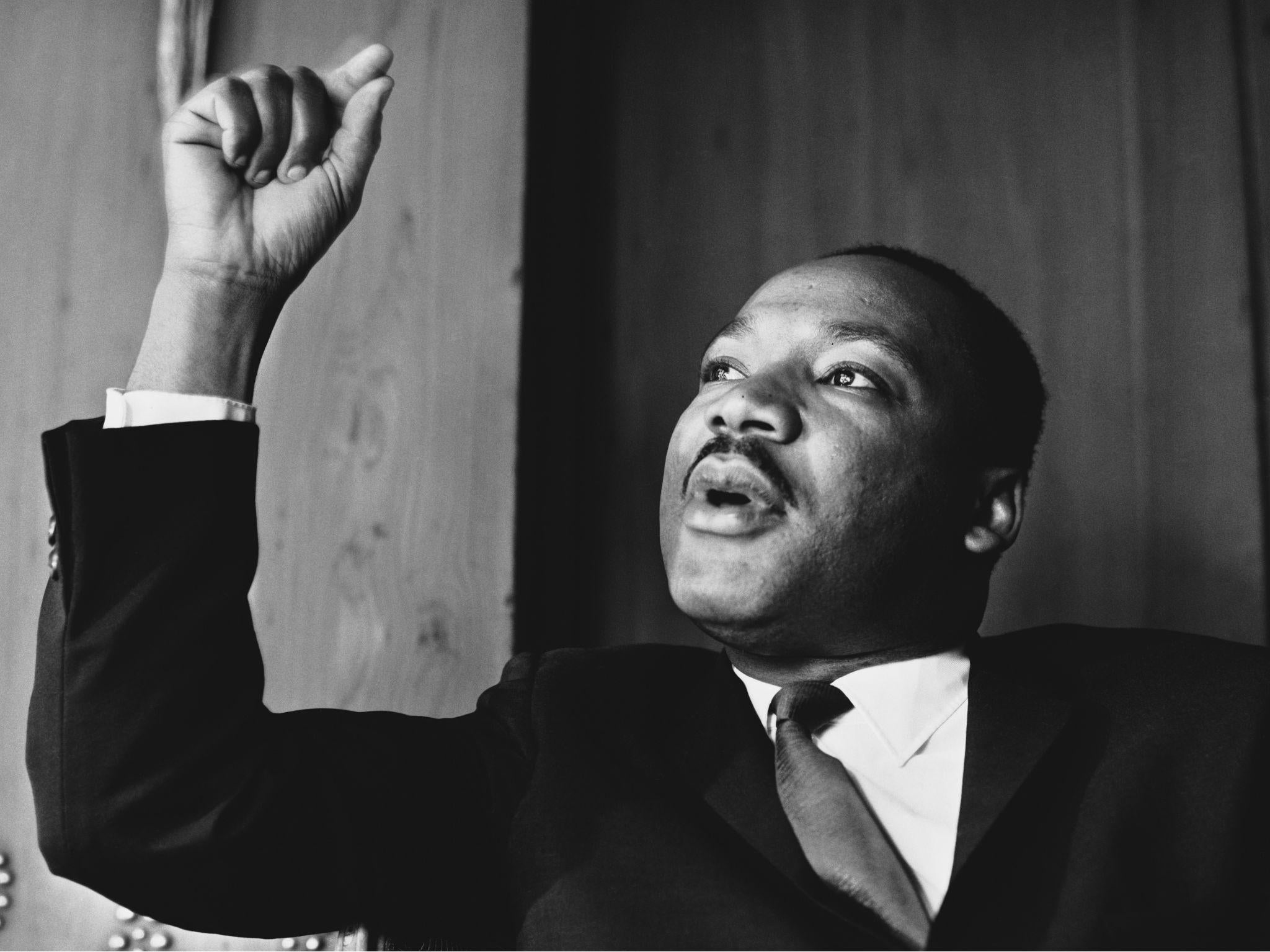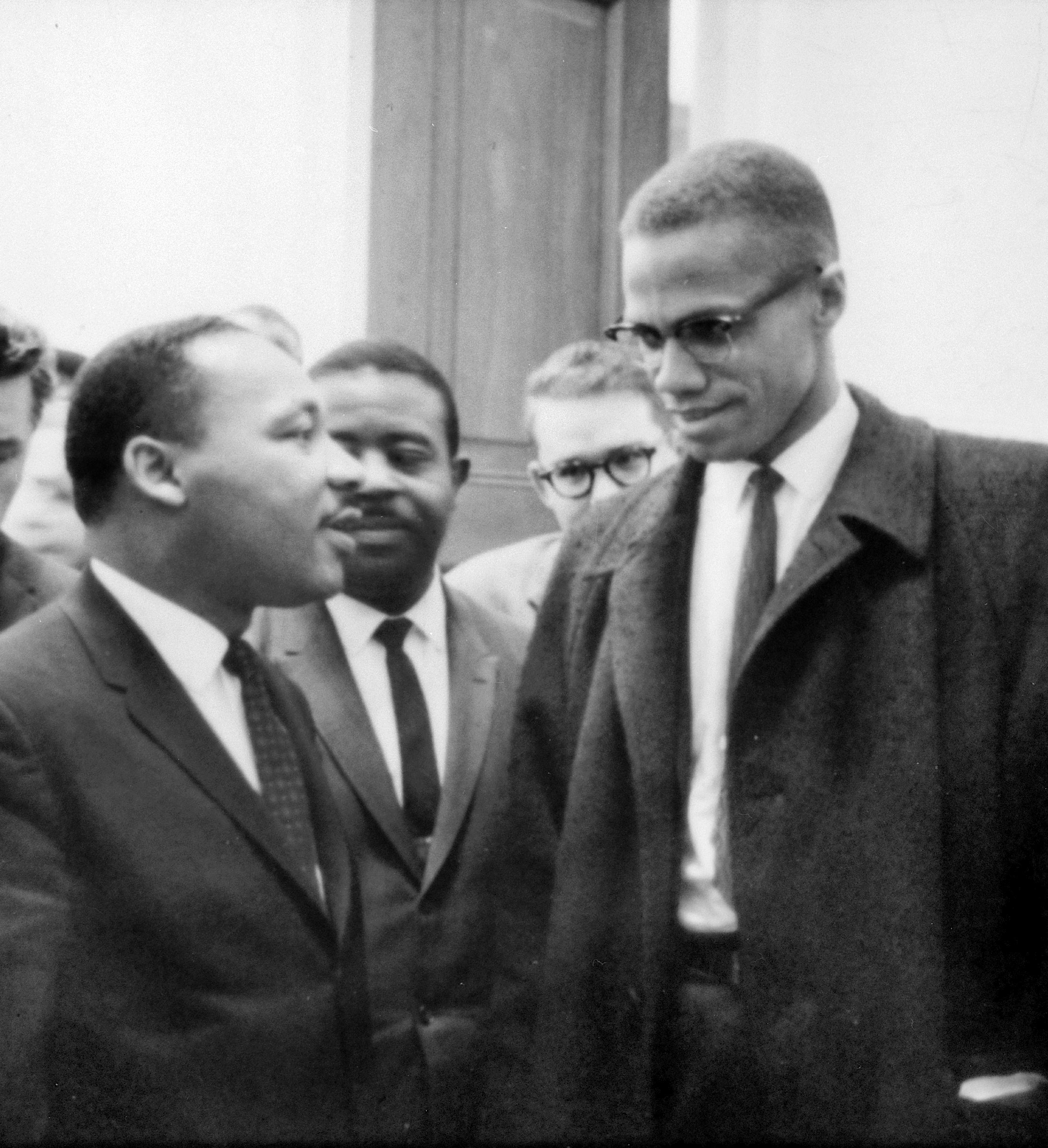How Martin Luther King's legacy continues to be relevant for social change
On the 50th anniversary of King’s assassination, Peter Tatchell looks at how the driving force of the black civil rights movement in America empowered other minorities around the world to campaign for their rights through his non-violence model

Your support helps us to tell the story
From reproductive rights to climate change to Big Tech, The Independent is on the ground when the story is developing. Whether it's investigating the financials of Elon Musk's pro-Trump PAC or producing our latest documentary, 'The A Word', which shines a light on the American women fighting for reproductive rights, we know how important it is to parse out the facts from the messaging.
At such a critical moment in US history, we need reporters on the ground. Your donation allows us to keep sending journalists to speak to both sides of the story.
The Independent is trusted by Americans across the entire political spectrum. And unlike many other quality news outlets, we choose not to lock Americans out of our reporting and analysis with paywalls. We believe quality journalism should be available to everyone, paid for by those who can afford it.
Your support makes all the difference.In the decades since his assassination on 4 April 1968, Martin Luther King Jr has been sanitised and sanctified; coopted and embraced by the American establishment as a bland, unthreatening saint of racial equality.
In truth, he was a radical dissenter who challenged the political, economic and military status quo at least as much as African American militants like Huey Newton of the Black Panthers and Malcolm X of the Nation of Islam. Hence the FBI’s obsessive, relentless attempts to discredit King and those around him, including smears that he was a communist, traitor, adulterer and pervert.
Now, many people think of King solely as a black rights champion. But he was much more than that. He opposed the US war in Vietnam, supported striking workers and demanded economic justice for poor Americans, black and white. No wonder Washington insiders saw him as a dangerous radical and a threat to the social order.
King’s civil rights campaign played a pivotal role in ending racial segregation and the denial of voting rights to African Americans in the southern states. It also created a cultural shift in attitudes on race issues in much, but not all, of the US.
In the Deep South, long after race equality was secured in law, statues commemorating pro-slavery Confederate leaders remained on their plinths and new ones were added. The Confederate flag continued to be flown from many public and private buildings. This was proof that changing the law to end racist discrimination and voter suppression was not enough.

The focus of the black civil rights movement was legal equality. While this was understandable and the immediate priority, it also had a downside. Once official discrimination was ended and formal legal equality won, the movement dissipated. The direction, coherence, dynamism and coordination that were its great strengths, and powered its many successes, were lost. Moreover, racism was not vanquished. It continued to plague the lives of African Americans. Civil rights was not the panacea that many had assumed.
This illustrates the danger inherent in any struggle that is pivoted on the sole and limited goal of equal rights. King understood this limitation. That’s why, post legal equality, he wanted to push the movement into a new phase focussing on economic injustice, which he saw as the other major factor holding back African Americans. He also saw this agenda as a means to transcend the racial divide by uniting disenfranchised black and white people in a common struggle for economic emancipation.
Half a century after the end of racially discriminatory statutes in the US, we see the stark limitations of mere equality. The informal segregation of black and white communities in some parts of the US is almost as great as it was back in Dr King’s day. While the black middle class has gained hugely since the 1960s, millions of poor black people are just as locked out of economic upliftment as they were prior to the start of the civil rights era.
Too many black districts of major cities and rural communities remain blighted by slum housing, unemployment and sub-standard education and healthcare. The racist bias in the criminal justice system means that black people continue to account for 40 per cent of the prison population, despite being only 12 per cent of the population overall. All this is further evidence that the legal equality striven for, and won, by the heroic civil rights activists was, by itself, insufficient.
Indeed, today, King’s legacy looks shaky and some fear it is being reversed. In a throwback to Jim Crow discrimination, recent US elections have been marred by voter registration and ballot rules that are biased against African Americans. Percentages of black people working in senior posts in federal agencies have recently declined. The repeated, ceaseless police killing of unarmed black people is, to some, another form of lynching. And, as in the pre-civil rights days, few officers have faced disciplinary action.
This has fuelled the Black Lives Matter movement, which many see as the civil rights movement mark 2. They cite the need to continue what King began but, cut short by an assassin’s bullet, never finished – the dream of a non-racial America.
My personal memories of Martin Luther King Jr stretch back to 1963, when I was 11 years old and at school in suburban Melbourne, Australia. I read a news report about the Ku Klux Klan bombing of a black church in Birmingham, Alabama, when four young girls about my own age were murdered. How could anyone kill another innocent human being, I thought, let alone four little girls in church on Sunday morning?

It prompted my interest in, and support for, the freedom struggle of African Americans and, in particular, the work of Dr King. Given my then devout Christian upbringing, I readily related to him as a Baptist pastor. To me, he was fulfilling the love and compassion of the gospels.
When I began my first campaign, aged 15 in 1967, I looked to Martin Luther King and the black civil rights movement as a model for how to do effective activism. They became my template. I adapted their ideals and methods to my early campaigns for Aboriginal rights, repeal of the death penalty and conscription, Australian withdrawal from the Vietnam War, LGBT liberation – and all my subsequent human rights work.
I was 17 when I realised I was gay in 1969. There were no LGBT organisations, not even any helplines, in Melbourne. So I took my inspiration from the black civil rights movement. I reasoned that just as black people were an oppressed minority, so were LGBT people and that we had a similar claim to human rights. If people in power ignored our just claim, it was, I argued, morally justified and politically necessary to resort to non-violent direct action and civil disobedience, in the footsteps of Dr King.

I have applied this rationale in my 50-plus years of LGBT and human rights campaigning, involving more than 3,000 protests and over 100 arrests.
This I owe Martin Luther King. I learned from him how to make social change, as he learned from Mohandas Gandhi via his fellow civil rights activist, Bayard Rustin, who introduced King to Gandhi’s ideas and non-violent tactics of passive resistance. Indeed, Rustin was a key thinker, strategist and organiser of the black civil rights movement but selflessly chose to stay in the shadows because he feared that this homosexuality and left-wing views would be used by the media, politicians and the FBI to discredit the movement.
As we reflect on this 50th anniversary of Martin Luther King’s assassination, there is no doubt in my mind that his enduring legacy is the continued relevance of his ideals and methods to every movement for social change, worldwide. He fought a specific struggle with a universal applicability.
His model of non-violent resistance was echoed in the Greenham Common anti-nuclear protests, OutRage! direct action against anti-LGBT laws and, further afield, the Czech “velvet revolution” that ended communist tyranny and the “people power” demonstrations that bought down the Philippines dictator Ferdinand Marcos.
Right now, King’s aspirations are being played out in the Black Lives Matter movement, which is a continuation of what he began. And all across every corner of the earth – from Russia to Iran, Ethiopia, West Papua, Balochistan and China – people yearning for freedom are challenging despotism using similar non-violent methods.
Martin Luther King Jr is 50 years dead. But his vision lives on and will remain a potent inspiration for global social activism for decades to come. Bravo!
Peter Tatchell is director of the Peter Tatchell Foundation (PeterTatchellFoundation.org)
Join our commenting forum
Join thought-provoking conversations, follow other Independent readers and see their replies
Comments